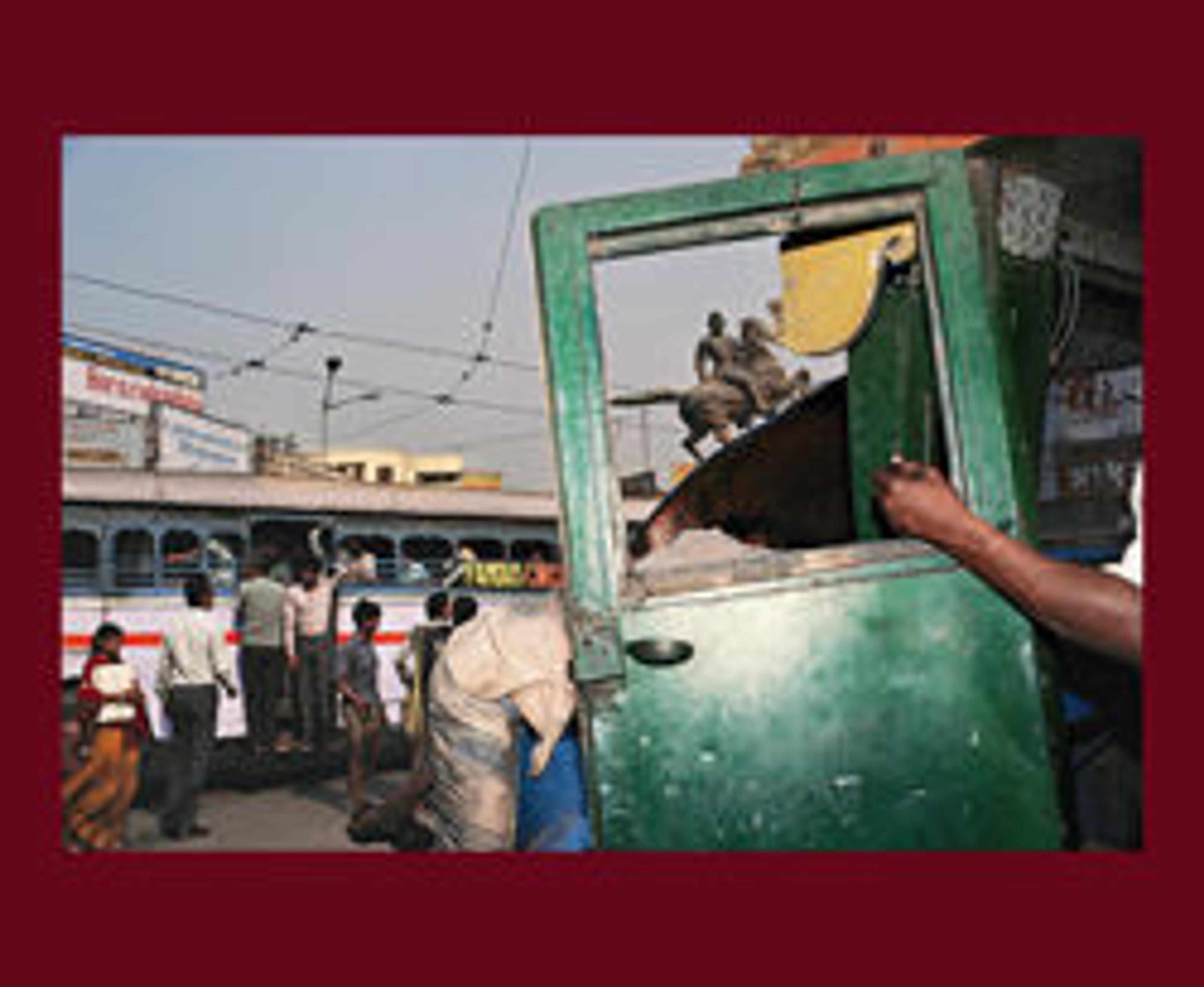[The Taj Mahal from the Banks of the Yamuna River]
The Taj Mahal, built by Shah Jahan as a mausoleum for his favorite wife, Mumtaz Mahal, between 1632 and 1645 is among the most beautiful buildings in the world. Perhaps the finest example of late Indian Muslim architecture, the white marble tomb sits in a walled garden, its domes serenely reflected in an oblong pool. Next to it stands its mirror image, a virtual replica repeated for symmetry. Characteristically, Murray did not limit himself to the axial point of view, so dear to visitors, which displays the Taj and its reflected image to full advantage. Instead, he made several views that describe its actual context. In one, the building looms up beyond the garden of a paper factory; here, it appears sandwiched between the neighboring mosques. Seen from a crumbling parapet above the Yamuna River and wholly ignored by the two men squatting there, the pavilions appear as fantastic remnants of Mughal glory, a sublime architectural parade stranded in the middle of the nineteenth century.
Artwork Details
- Title: [The Taj Mahal from the Banks of the Yamuna River]
- Artist: John Murray (British, Blackhouse, Aberdeenshire, Scotland 1809–1898 Sheringham, Norfolk county, England)
- Date: 1858–62
- Medium: Albumen silver print from paper negative
- Dimensions: Image: 39.9 x 44 cm (15 11/16 x 17 5/16 in.)
- Classification: Photographs
- Credit Line: Gilman Collection, Purchase, Joseph M. Cohen Gift, 2005
- Object Number: 2005.100.71
- Curatorial Department: Photographs
More Artwork
Research Resources
The Met provides unparalleled resources for research and welcomes an international community of students and scholars. The Met's Open Access API is where creators and researchers can connect to the The Met collection. Open Access data and public domain images are available for unrestricted commercial and noncommercial use without permission or fee.
To request images under copyright and other restrictions, please use this Image Request form.
Feedback
We continue to research and examine historical and cultural context for objects in The Met collection. If you have comments or questions about this object record, please contact us using the form below. The Museum looks forward to receiving your comments.
